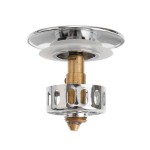The Essence of Japanese Wood Bathtubs
Immerse yourself in the tranquil embrace of Japanese wood bathtubs, known as ofuro, and discover their unique charm and therapeutic benefits. Crafted from the finest woods, these bathtubs are not just vessels for bathing but works of art that enhance your bathroom's ambiance and provide a rejuvenating experience.
1. Materials: A Symphony of Woods
Japanese wood bathtubs are typically made from durable and moisture-resistant woods such as cypress, hinoki, and cedar. Cypress, known for its exceptional strength and water-repelling properties, offers a warm, golden hue and a sweet aroma. Hinoki, famed for its antibacterial and antifungal qualities, exudes a pleasant, calming scent that promotes relaxation. Cedar, with its reddish-brown color and natural oils, withstands moisture and provides a luxurious feel.
2. Craftsmanship: The Art of Tradition
Each Japanese wood bathtub is a testament to skilled craftsmanship. The wood is carefully selected, shaped, and joined using traditional techniques that ensure watertightness and durability. The finest bathtubs are made from a single piece of wood, resulting in seamless construction and an elegant aesthetic.
3. Design: Functional and Aesthetic
Japanese wood bathtubs come in various shapes and sizes to complement different bathroom designs. They typically feature a rectangular or oval shape with gently curved sides, which provides a comfortable and ergonomic bathing experience. The tub's depth allows for full submersion, promoting relaxation and muscle tension relief.
4. Therapeutic Benefits: Beyond Bathing
Bathing in a Japanese wood bathtub offers numerous therapeutic benefits. The natural oils and aromas released from the wood have calming and invigorating effects. Hinoki, in particular, is renowned for its antibacterial and antifungal properties, making it ideal for individuals with sensitive skin or allergies. The heat retained by the wood creates a cozy and soothing environment that supports deep relaxation and restful sleep.
5. Care and Maintenance: Ensuring Longevity
To preserve the beauty and functionality of your Japanese wood bathtub, proper care and maintenance are essential. Rinse the tub thoroughly after each use to remove any residue. Avoid using harsh chemicals or detergents, which can damage the wood. Regularly oil the exterior with a natural oil such as tung oil or linseed oil to protect it from moisture and maintain its luster. With proper care, a Japanese wood bathtub can last for generations, providing a lifetime of tranquil bathing experiences.
Embrace the serenity and wellness of Japanese wood bathtubs. Their exceptional craftsmanship, therapeutic benefits, and timeless beauty will transform your bathroom into a sanctuary for relaxation and rejuvenation.

Traditional Japanese Wood Baths West Wind Hardwood

Japanese Soaking Tub Wood Outdoor Bathtub Tubs

Japanese Style Bathtub In Ofuro Zen Wood Japan Wc

Bathroom With Japanese Wooden Soaking Tub Asian Portland By Kuda Photography Houzz Ie

Ofuro Modern Japanese Style Wooden Hot Tub Riviera Tubs

1510mm Japanese Oak Wood Soaking Bath Freestanding Modern Natural Bathtub Homary

Japanese Soaking Tubs Everything You Need To Know Spaflo

Wooden Bathtub In Japanese Style Idfdesign

Japanese Bathroom Wasou

The Manufacture And Of Wooden Baths Hinoki Shimizu Mokuzai Sangyou








